Willard Suitcase #17
I am working very hard to keep up with shooting the suitcases, which is slowing down my ability to post updates here. This case belonged to Flora T.
There are a lot of nice details on the case itself. Just handles and clasps could be an entire chapter in a book.
And those of you who have been following the project for a while know my fondness for tags and labels.
This trunk has three distinct levels. There are two removable sections and below them, the main compartment.
Flora clearly liked to sew.
I would be interested to find out what this particular item was used for. I assume spools of thread went on the posts, but other than that I am lost.
These small sewing boxes are always interesting and so personal.
I like the little flour pin in this container.
The top of this mirror has an interesting design.
This was the first I had come across detachable collars for a woman, although I would guess they would have been common for the time.
I wonder how long Henry Likly & Co. produced trunks. As you can see in the opening photo it is quite beautifully made.
It is at this level where things get interesting.
Before Willard, Flora was a nurse and was over 100 years old when she died there.
But I am not sure about her use of injectable strychnine sulfate. I looked around the net for information as to its use, but didn’t have much luck. At some dosages it could be used as an anti-convulsant, so it is possible she had epilepsy.
Again, I just don’t have any words to describe seeing and photographing these objects.
I try to be informative and provide some context, but ultimately the photos pretty much speak for themselves.
The case also contains many letters and some amazing photographs which help to fill in some idea of her personality. I’ll try to get to those in part two. As usual, thanks for all the continued support and encouragement. This project has turned into a huge undertaking, but is so incredibly satisfying.






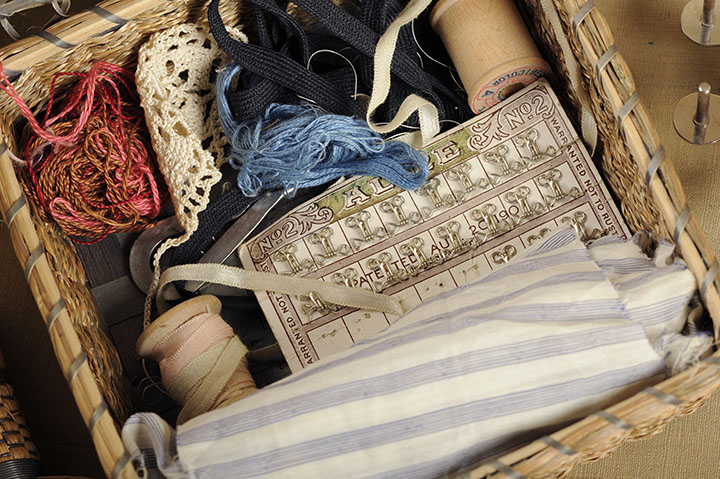

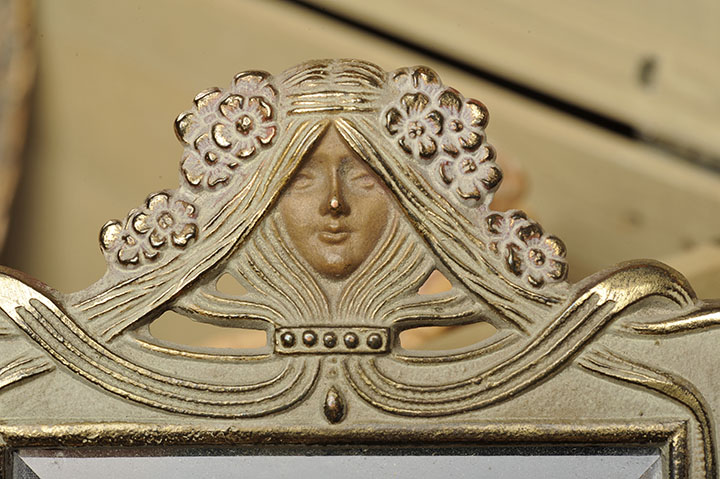
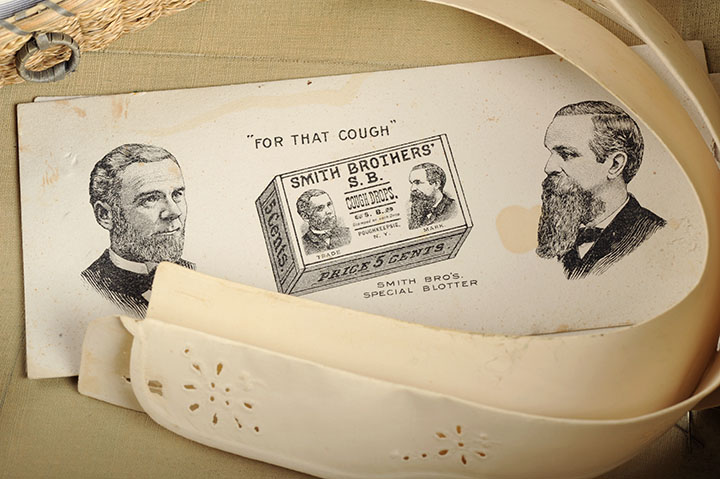
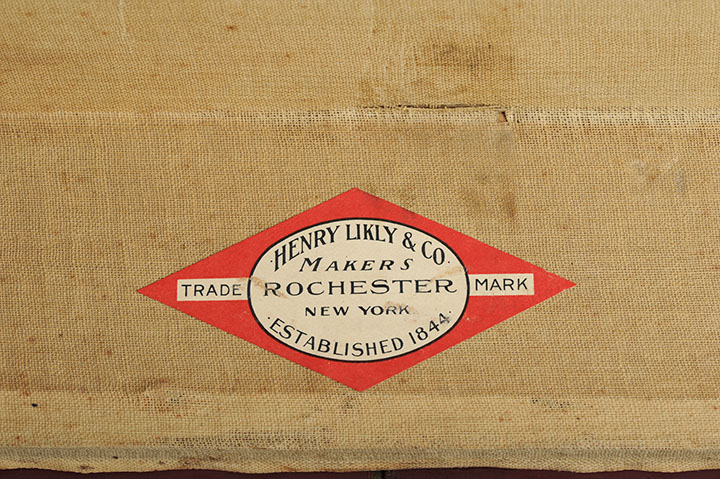
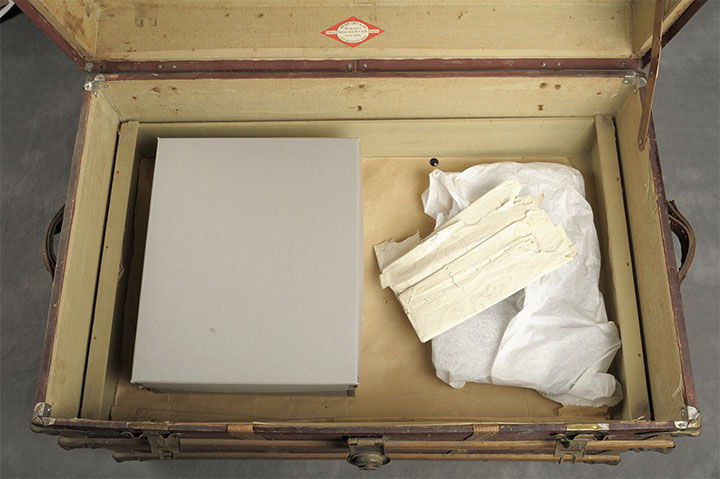
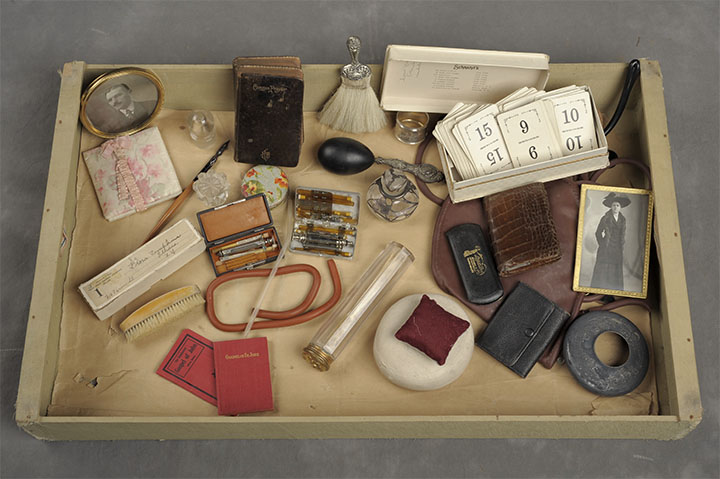
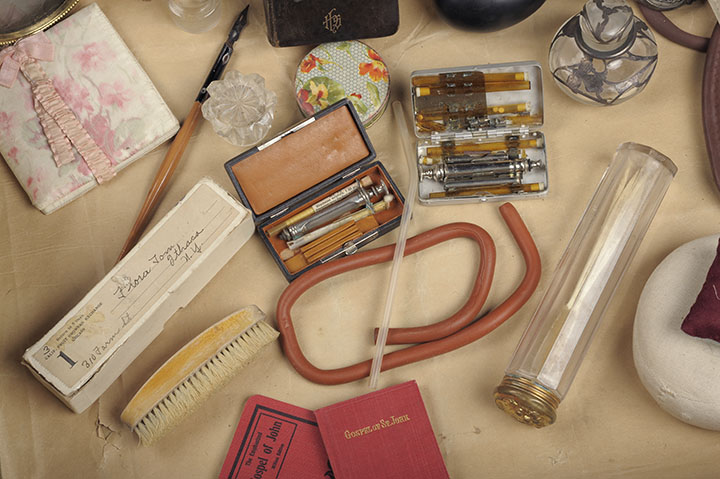
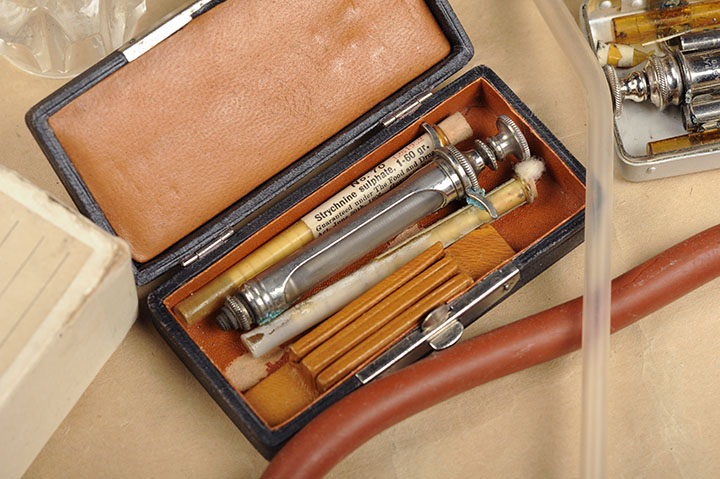
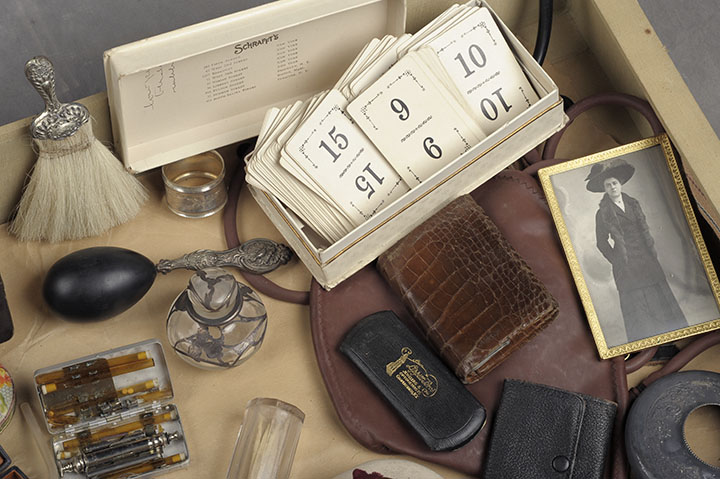
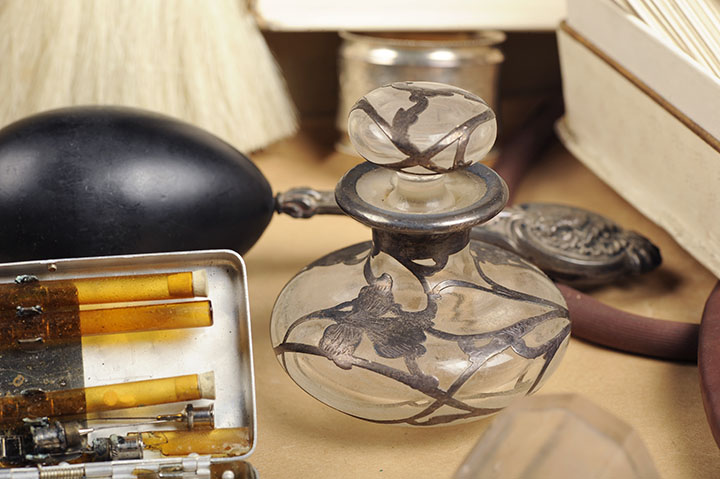
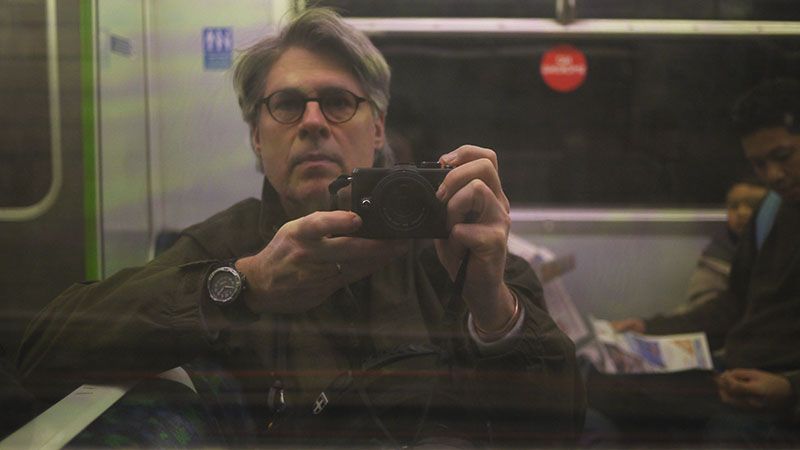
A quick search gives this info:
http://diy-steam-trunk.blogspot.com/2011/11/history-of-henry-likly-and-company.html
It appears that that was the company name from 1870 – 1925.
Kay, thanks so much for looking into this. I just didn’t have the time. But I really like having people look into things like this; it’s a nice way for me to involve folks in the project. Best, Jon
Thank you for sharing these wonderful photos. I think it’s so lucky to have been able to photograph a trunk (as opposed to a suitcase) because you get to view a greater assortment of items that the patient felt were important enough to carry to Willard. I’m curious about whether or not Flora made any entries in the alligator-covered notebook (an address book?).
Fascinating post! One of the best. Thank you, Jon. Flora’s silver wrapped perfume bottle is gorgeous! I found one very similar:
http://www.bing.com/images/search?q=antique+perfume+bottles+silver+overlay&view=detail&id=0F647F2D20AE8B005312D552FD04C93F2A02848C&first=65
Thanks again for sharing what you do.
Patty
Patty, thanks for the comment. I love that bottle. Best, Jon
I suggest the pillow like at the center would hold needles or pins while the cup might hold bodkins to go with lace making or tatting
Is that where the expression “Odds Bodkins” comes from? Cool
I am really enjoying your work and your comments. What fun for YOU and for us!
I agree with Florence about your work and comments. I find the Willard suitcases inspiring. I was excited to glimpse a copy of A Girl of the Limberlost amongst Flora’s possessions as it one of my favourite books.
Greetings from a very hot London!
Incredibly touching! Thank you Jon.
On the item you were wondering about, it looks like there is a pin cushion, so it was definitely for items related to sewing. Not sure what would go in the little cup — at first I thought it might be a thimble, but it doesn’t look like it’s detachable.
most beautiful one yet Jon. thanks so much, such a treat to get these.
You were fortunate to be given this opportunity. While my photographic skills are not what you possess, I would have written my fingers to nubs. Continued best wishes and thank you for sharing.
Hi everyone, Mary posted this comment under the photograph itself and I didn’t want anyone to miss it. Here is what she said:
Jon, you are right about this object, it is a reel stand that held 10 spools, with pincushion. Looks to be made of steel? These items were hugely popular in the Victorian era. The egg-cup shape may have been intended to hold a darning egg. Flora seemed to be drawn to Arts & Crafts/Art Nouveau, but the reel stand has a more contemporary look to it. (from M. Beaudry, author of Findings: The Material Culture of Needlework & Sewing).
I doubt that the egg shaped cup was meant to hold a darning egg. It’s a little hard to tell the scale for sure, but that small cup looks like it’s thimble-sized, and so a darning egg wouldn’t fit in it. The handle might, but the cup is too short to put the whole handle in, so I don’t think it would stand up. My suspicions would be that it is for storing a thimble (upside down, so that you could just stick your thumb in and it would be ready to go.) A quick google search turns up several reels that have thimble storage on board, although in different ways than this one. That is definitely a fancy darning egg in another compartment, I just don’t think it’s linked directly to the reel stand.
Thanks TheBon, I really appreciate your knowledge about this. Best, Jon
Also, in the bottom photograph the black oval object with the handle that looks like silverware is, I am quite sure, a darning egg. Never seen one with a handle like that though. J
It is a darning egg, I had one quite similar and if you were to pull on the silver handle, you should find that it stores needles.
Thanks Kris. Appreciate the info. Best, Jon
I own a darning egg almost exactly like that. I belonged to my great grandmother (1858-1942) who lived most of her life in the Rome, NY area.
A truly impressive portrait this time; thank you so much for the detailed post. Yes, as soon as I saw the cup and pincushion on the spool wheel, I thought “darning egg” too. We have an old family one with a handle, the whole thing in wood and less ornate than this, but similar in function.
Jon, the cup could also be for a beeswax candle… you would have used that for coating the thread so it wouldn’t tangle. This was a terrific post, thank you! Looking forward to seeing you in San Francisco.
N. Thanks for your input. I’ll keep everybody posted about SF. There will be an “artists” talk sometime in April. J
One more thing, the tall crystal shaker with the silver lid was used for tooth powder.
N. Great call. There is a toothbrush in the shaker, although you can’t see it in the photograph. Thanks
This was lovely! Everything was fascinating.
An incredible time capsule and encapsulating group of items to illustrate a life. …always riveted (and wonder how many volumes THE book will be!;-)
So interesting! This case gives do much detail! I probably asked this question before, but since I am so absentminded these days, I will just refresh it. Were the owners of these cases allowed to have these things with them in the institution to be used and then packed away at their death? OR were the suitcases taken and stored for them when they entered the home?? I was just wondering if this dear lady was able to carry on with her passion for sewing while in the institute. I do love to read everyone’s comments and suggestions. Thanks
So fascinating! Everytime I get one of your posts, it is like an unexpected present! I wonder if the picture is of Flora or of someone else. Was there any writing on it? The other thing I have wondered is whether the person ever got to use the objects or if the suitcases were taken upon arrival and not unloaded. How did they end up in storage with all the personal objects inside?
Thanks!
Interestingly strychnine sulfate.in the form of nux vomica is a homeopatic remedy…..presumably a little poison can do you good. The suitcases continue to tell such poignant stories.
I am always struck with the same question as Barbara. It saddens me to see the contents and think that once the suitcases were packed they may have never seen their belongings again. This is truly a noble project.
As I have said in other comments, patients did have access to their belongings, although in the case of the drugs in Flora’s trunk, I would guess she didn’t. Thanks for the interest and support. Jon
I would think that Flora was pretty well off. That appears to be a silver handle on the darning egg and the perfume bottle has what looks like tarnished silver decoration on it.
This website has a wooden reel stand on it so you can see what it would look like in use
http://alongcomesvintage.blogspot.com/2010/02/bringing-in-vintage.html
I look forward to more pictures of this wonderful case.
I found this online. Looks like Flora’s has an extra part but the capped part was definitely to hold needles and pins.
http://www.etsy.com/listing/77345732/unusual-primitive-antique-steel-spool
I think the cup is there to hold either beeswax or chalk. Both were – still are – used in sewing.
Thank you for sharing this! Interesting web site you posted about. I went and had a look…didn’t have time to “browse”, but certainly going to at a later date…may see some more of the items that I had question about in the suitcases. Thanks! I appreciate Jon for giving back the respect that the people at Willards deserved.
I always spend quite a bit of time examining these posts. These treasures are such a gift to us so many years later. Thank you for the effort and sharing them with us.
They are evidently gone now, but I remember shopping at Likely’s Luggage when I was younger. I remember getting a briefcase from them, but never knew they also manufactured luggage?
Reblogged this on cotterb and commented:
Jon Crispin’s work is just wonderful.
The bottom of the pin cushion could hold your tape measure, a package of needles or a tube of machine needles as well as other notions that you would need such as the hooks and eyes on the card stock from a different photograph. The cup could also hold any ribbons or bias tape needed for hand work. You could carry the spool rack to a chair to do hemming, etc. The only item needed that does not have a clear place would be scissors, possibly in the scallops around the spools, however, the scissors could not be too long.
[…] it easier on people I will link to some of the earlier updates. So here we go: Dmytre, Frank, Flora, and some earlier ones: Charles, and the first one I ever shot which explains the genesis of the […]
[…] cajetilla de cigarros que sirven contra “el catarro”, un uniforme de soldado…), Flora T. (un limpísimo y aseado baúl con útiles de costura y bordado, un espejito art déco, dos […]
strychnine sulfate is a respiratory & circulatory stimulant. If you google Olympic Medicine and strychnine sulfate you will see a case of doping with it by marathon runners. Also A Text-book of practical therapeutics By Hobart Amory Hare in 1898 lists Nox Vomitis (old name) as a cardiact stimulant. (p272-) Also good for counter acting surgical shock (aka opium overdoses)
strav, thanks for you comment. I looked around the internet and for some reason couldn’t find much information about the drug. You have been very helpful. And thanks for being interested in the suitcases. Jon
If Flora was a nurse, that explains the syringe kits – most nurses, particularly in the early 20th century, did a lot of home healthcare, and most had their own medical supplies – so it may have been part of her kit – I suspect the rubber tube and the glass straw were also part of that kit. The medications may not have been hers, but items in standard use when she was active. The removable collars were also a standard part of nursing uniforms (although not usually with the decorative detail the one has). The glass bulb at the top left of the image showing both sides of that tray (between the round photo and the book) kind of looks like a cupping glass, although the angle and size of the image make it hard to say. Also possibly part of her nursing kit. Clearing her role as a nurse was an important part of her identity that she brought with her to Willard.
Very glad to help. Jen is of course right, hypodermics of that era were a very important part of a medical professionals kit. The strychnine sulfate and hypodermics makes me think she had possibly worked in a hospital. Also I miss cited the pages 392-296. drop me a line if you want a second pair of eyes looking for some obscure thing.
Straav, thanks again for your input. Please feel free to let me know when you see interesting items in the photos. Best, and stay in touch. Jon
Just found this blog, so interesting. Coincidently I went to the Foundling Museum today in London and saw the tokens mothers left when they gave up their children, in the hope of identfying them later if they could afford to take them back.
Glenda G….that sounds like a very interesting display. Is there a web page with photos? I wondered also if there were any reported or documented experiences of mothers finding there children as a result of these tokens ? Thanks for sharing.
Colonial Williamsburg has an exhibit up of the tokens in their textiles gallery. I saw it while they were installing it–fascinating exhibit.
that little cup is suppose to protect your finger from needle
The pewter (or silver plated) lid with the circular opening it (in the lower right-hand corner of #13 photograph) is the lid for a hair receiver that would have been china or glass, often hand-painted.
Strychnine was used for quite a number of things, actually. I know injections were used for treating paraplegia, correcting eyesight, and depression. The last is the most interesting to me in this case — it was thought a good treatment for depression with anemia under the assumption that these originated in the nervous system. (I’ve no idea if these theories were accurate at all or if the strychnine was helpful.) I found a reference that goes into a bit more detail, but unfortunately the mention of depression is a sidenote in the last paragraph here: http://chestofbooks.com/health/materia-medica-drugs/Roberts-Bartholow/Practical-Treatise/Hypodermatic-Injection-of-Strychnine.html .
In San Francisco I noticed there are other photos connected to this trunk one a group of women and the other a picture of two little blonde girls can you possibly post these pictures on this site Thank You.
Amber
[…] Willard Suitcase #13, Willard Suitcase #14, Willard Suitcase #15, Willard Suitcase #16, Willard Suitcase #17, Willard Suitcase #18, Willard […]
[…] abandoned suitcase of the Willard Asylum, NY from a corresponding period which I chanced upon on Jon Crispin’s photography project. What an intriguing yet rather dark object amidst the other classy belongings. Haunted asylums and […]
My goodness, such wonderful photos! It’s easy to see your passion for the human side of the patient that was there. I stumbled onto your work while searching for info on someone who was in Dorothea Dix in NC. I was fascinated by your work. The person I was searching for info on is still alive and we need to know what was done to him. We are not having much getting the records and to see your work gave me hope that we will eventually get the info we need. Thank you for renewing me hope.
Letha Garrison
Dear Letha, Thank you so much for your kind words. I really enjoyed coming to Raleigh some years ago when I presented my suitcases project to the community there. Wishing you all the very best. Jon